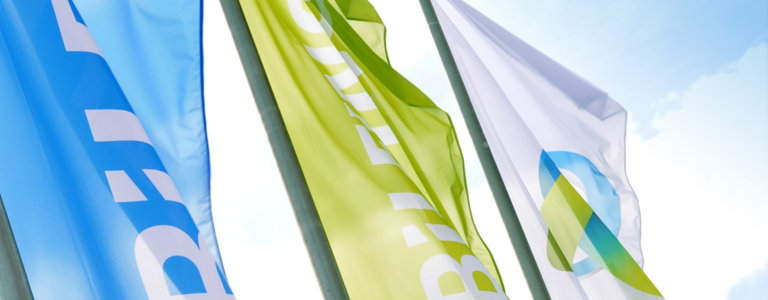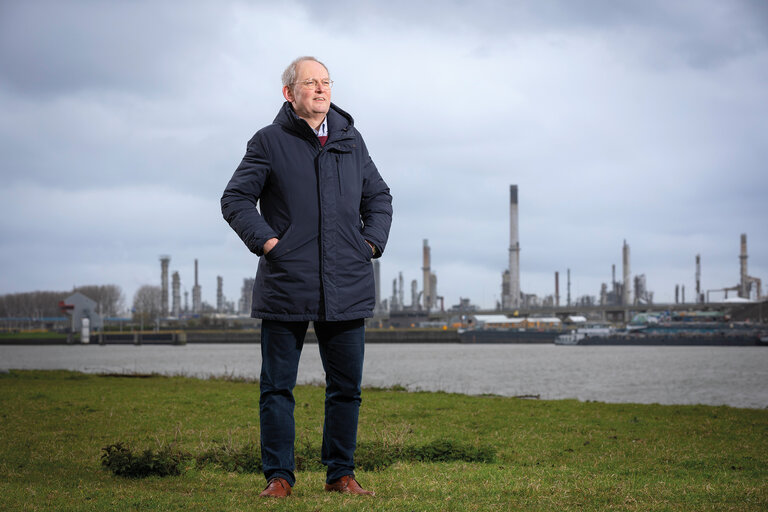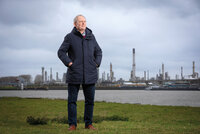
Bilfinger Magazine

Arjan van Dijk, Safety Delta Nederland’s program director: 'You don't want a photo opportunity but a film'
By 2030, the Dutch (petro)chemical industry must be the safest in the world. And with that, in seven years, this industry will have an internationally recognized top position in the field of development and implementation of safety concepts for handling hazardous substances. In a nutshell, the ambition that the relatively new safety organization Safety Delta Nederland has set for itself. Program director Arjan van Dijk explains.
‘Safety Delta Nederland (SDN) stems from the Sustainable Safety 2030 program concluded in 2020,’ Van Dijk says. SDN rests on two pillars: a knowledge center and an innovation center. 'Within the knowledge center, we want to collect and make accessible all the basic knowledge that exists at companies that fall under the BRZO legislation. That knowledge is now widely distributed among hundreds of companies, industry associations, policy makers, knowledge institutions, regulators and consultants. Within the innovation center, we show what developments are taking place in the Netherlands and bring together partners and their research and innovation needs. The center initiates new research programs and helps find funding for new safety concepts. Innovation is a major driving force to increase safety.'
Reduce accident frequency
What is the actual safety record of Dutch BRZO companies? 'Compared to other industrial sectors, it is quite good,' Van Dijk knows. 'Yet we have two or three BRZO incidents a year in the Netherlands. These are accidents involving people or leaks in installations that have to be reported to the European government. We have to reduce that frequency. We have an awful lot of knowledge to improve safety, but it is scattered and often needs interpretation.' SDN therefore stands for finding, connecting and innovating in safety. 'We connect the people who work on safety every day with colleagues, experts and the latest reliable knowledge through a (digital) community.'
Ingrained patterns
SDN does this based on four themes, Van Dijk explains. 'The first theme is risk control assurance. In other words, make sure you have the risks mapped out, that you know what your control measures are and that they work. The second concerns safety culture and leadership. A leader's behavior largely determines a site's safety culture. If a leader cleans up litter en passant during a round, that action sends a certain message. If a leader indicates that things can be condoned, that becomes the norm. There is an unwritten law in the industry: if there are a lot of safety issues, it's time to replace the boss. Because safety is also about breaking ingrained patterns.'
Distrust
The third theme is measuring safety performance and learning from incidents. 'To unearth trends, which tell about possible weaknesses in safety management measures in the sector, we need data, from government and industry. In sharing this kind of information, we still experience a lot of mistrust, because there are always reputational issues lurking.' SDN is leading a project bringing regulators and companies together to talk freely with each other about safety performance data and how to learn from incidents and near misses. 'Important, because near misses should be seen especially as gifts! A good leader picks them up and sees if it is a symptom of weaknesses in his management measures. If that is the case, he or she responds, without being tempted by the risk-rule reflex: taking disproportionate, one-off interventions that do not solve system weaknesses and are therefore often counterproductive.'
Report
The fourth theme is process safety & asset integrity management, which includes, for example, corrosion under insulation and aging installations. 'An old chemical plant does not have to be unsafe at all,' says Van Dijk. It's all about mapping out the risks, and - following a systematic approach - replacing parts of the installations on time and remedying corrosion on time.' Another aspect does play a role there, Van Dijk warns: 'The way of reporting process safety incidents. A number of companies do that well. Some perhaps too well, making it seem at first glance that there is a lot going on. But often smaller companies do not report everything. This makes it very difficult to form an accurate overall picture. That is why knowledge sharing is a priority at SDN.’
Language
In addition to knowledge sharing, innovation is a priority at SDN. 'That happens in various ways. For example, about the way we supervise. There is a leading group of companies that are very consciously working on safety, a large middle group that is doing well, and unfortunately there is still a small minority that wants to get away with it. In this leading group you want to strengthen internal supervision, with a different supervisory relationship: you want to have supervisors watching from a distance. You don't want a photo opportunity from an annual inspection but a film that tells all parties that a company is in control of its safety risks and delivers corresponding safety performance. For this we have recently set up a project.' Another great example of innovation is the project implemented as a Safety Deal at AnQore's chemical product site at Chemelot. Van Dijk: 'Waiting reports were analyzed there. And what turned out? That two days before there is an incident, you can already tell by the operator's language that it's going to happen.'
Obstacles
Becoming the safest industry internationally by 2030 and having a system that we can market for that purpose: is it realistic to achieve this ambition? Van Dijk answers in the affirmative, but sees some obstacles on the road: 'The energy transition brings new risks. In addition, we are facing economic headwinds with high energy prices, inflation and personnel shortages. This is all at the expense of the time and resources available to innovate. And innovativeness is exactly what we need.'
Arjan van Dijk
For nearly thirty-six years he worked for Shell. Did research there, was an HSE advisor, ran refineries and completed all kinds of projects. After his impressive career, Van Dijk could have enjoyed his retirement in the summer of 2020. 'But I decided it would be useful to bring people together and coach them on process safety and culture change at companies. That's broadly what I do at Safety Delta Nederland (SDN).'

